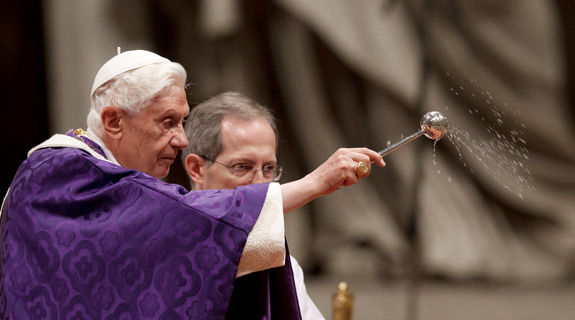Christians pay ten percent (or ‘tithe’) to the church every time they visit. This is exactly where the name ‘dasond’ comes from. By definition,dasond means ‘tenth’. Ismāʿīlīs pay anything but 10% on their savings. They actually pay at least 12.5% on their income, not knowing what the background of this payment towards their Imām is.
The tithe bowls passed around in Christian churches are downgraded to just ‘mehmani’ collection bowls since they aren’t quite large to carry the hefty amounts which Ismāʿīlīs are deprived of on a monthly basis in the name of dasond.
“A young Ismāʿīlī described how he had been schooled from childhood to pay the monthly dasond, or tithe, which every Ismāʿīlī gives to the Imām. It is the mainstay of Ismāʿīlī finances and brings in untold millions of dollars a year. Dasond means one tenth, but the actual proportion of income a man pays may be less if he is poor or much more if he is rich or particularly pious. The twice a month with the “one-fourth group” or discuss religion and ponder the Aga’s latest farmans (admonitions). “Day by day, you got lost in the religion,” he said, “and you thought that religion was the end of life and whether you lived poor or rich was no matter, you will sacrifice everything. When you are in the one-fourth group you want to be in the one-half group. Yes, there are people who give one-half of their income to the Imām. Some people give everything, they give even their homes and their dishes and their clothing. And everyone admires them. III would sit thinking: ‘If only I had the courage, if only I were devoted enough to give more’”.

Photo of a tithe collection plate in a church used as a ‘mehmani’ collection bowl in Ismaili Jamatkahanas.
The money is collected at the Jamatkhana by the two community leaders, themukhi, or chief, and the kamaria, or treasurer, both the Imām’s appointees, who total the income and dispose of it according to the instructions of the Imām. But the dasond by no means exhausts an Ismāʿīlī’s opportunities for proving his devotion to his Imām. According to the Khoja Reformers, he gets about 275 other chances during his lifetime. There is the chati mandu, paid six days after the birth of a child; the gulf fee paid when a boy’s head is shaved in his eighth of ninth year. An Ismāʿīlī can be solicited for funds when he embarks on a sea voyage and when he returns, when he becomes ill and when he recovers. If he wants to be considered a modern-day fidaya [fidai], he joins the Mota Kamno Panjebhai (Great Works Association), a secret, semireligious order with five degrees of initiation. It’s symbol, appropriately enough, is the open hand. Any Ismāʿīlī who can raise the entrance fee ($15 to $1000 depending on the degree) and keep up his payments can ascent the scale of ranks – membership can even be bought posthumously, for dead relatives. All who can afford it join, for it is at Panjebhaimeetings, sitting on straw mats on the floor of the Jamatkhana the men on one side, the women on the other, or chatting on the verandah afterward, that a striving businessman meets the wholesalers and contractors who can do him the most good, where a doting father drops hints about his intelligent son who would like a community scholarship, and where a conscientious mother scouts suitable husbands for her marriageable daughters. The higher the degree, the better the contacts.
On his deathbed, an Ismāʿīlī gets a final chance to pay financial tribute to the Imām as the mukhi moistens his lips with water mixed with dust from the holy city of Kerbala, and reads about the Hindu god Vishnu’s ten incarnations from Das Avatar.
Al of these tithes, fees, and gifts are the Imam’s to dispose of as he pleases. The point is explicitly made in Ismāʿīlī dogma which repeats over and over against that all offerings are an “an absolute gift to His Highness personally.” It has been confirmed in the courts in a number of law suits brought – unsuccessfully – by restive fee-payers. Starting with Judge Arnould’s famous decision in 1866, the courts of India and East Africa have held that the offerings “were intended … to be for his [the Imām’s] own personal use and benefit,” and he need not account for them. If, as at the epochal Golden Jubilee, the Aga decided to use them for the benefit of the community, that was a bit of personal generosity for which his followers humbly thanked him.

The Pope sprinkles holy water just as rose water is sprinkled in Ismaili Jamatkhanas. Rose water is also used in Greek Churches.
The sums collected are enormous. No one knows – or is disclosing – the total. Ismāʿīlīs are as secretive about community financing as they are about every other aspect of their religion. Their custom has been to say nothing, except for occasional denials of such rumors as that the Imām sells his bath water. A reliable source recently estimated that today in Pakistan alone, the take amounts to 100,000 rupees ($20,000) a day – or $7,200,000 a year. “
(Slater, Leonard. Aly: A Biography. London: W.H. Allen, 1966. 79-80. Print.)
The above are a few paragraphs taken from the biography of Aly Aga Khan – who is the father of present-day Aga Khan IV. The complete book can be bought from various sources on the internet and interesting bits can be found right here on the Inside Ismailism blog.

Prince, Adventurer, Diplomat, Deity – and perhaps the Greatest Lover of our times – ALY: A BIOGRAPHY by Leonard Slater



0 comments:
Post a Comment